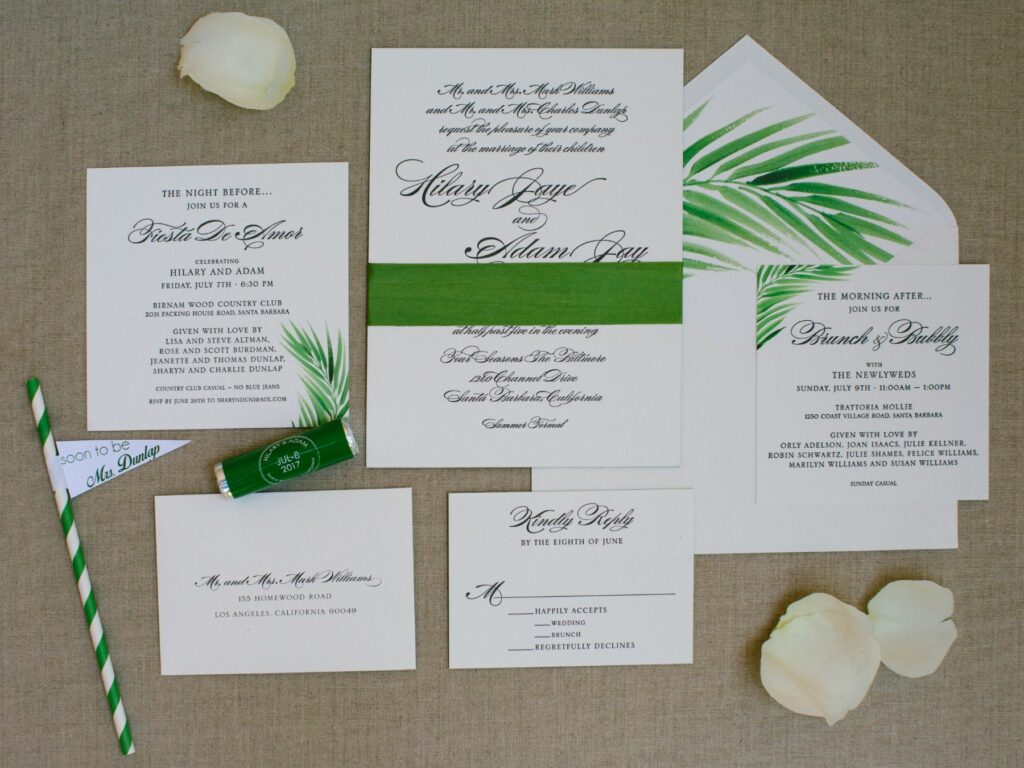 Hello friends! I’m a bit of a stationery nerd, but most couples haven’t given much thought to things like paper and printing until it’s time to choose wedding invitations. The printing method you choose for your stationery is actually pretty important – not only does each method convey a certain style, but each also has an affect on cost and turnaround time.
Hello friends! I’m a bit of a stationery nerd, but most couples haven’t given much thought to things like paper and printing until it’s time to choose wedding invitations. The printing method you choose for your stationery is actually pretty important – not only does each method convey a certain style, but each also has an affect on cost and turnaround time.
So what are the primary printing methods to choose from? Read on.
- Engraving – Text is engraved onto a copper plate that’s dipped in ink and paper is pressed onto the plate, creating a raised design. It often conveys a beautiful Old World feel. Bear in mind, that because it’s so intricate, engraving is costly and time consuming. It can often take stationers up to eight weeks.
- Letterpress – The opposite of engraving, letterpressed invites are indented in the front. A cast-iron plate with raised lettering is dipped in ink (similar to a stamp) and pressed onto paper. It’s a high-end printing process that can take about three weeks to a month.
- Thermography – Thermography was designed to mimic engraving at a more affordable price point. It uses flat printing that’s dusted with resin powder while wet and then heated so the letters rise and have a slight sheen. Turnaround time is two weeks to a month.
- Offset or Flat Printing – Similar to digital printing, but is higher quality. The letters and design are flat against the paper. It’s one of the least expensive methods and turnaround time is low. Just remember that extremely heavy paper won’t fit to the printer.
- Foil Stamping – A heated copper plate pushes foil onto paper, leaving a metallic design. It’s a luxe, dramatic effect that looks best when used sparingly on an invitation (if every letter is foil stamped, it’s actually pretty hard to read). It’s a costly method with a long turnaround time, but it sure does makes a statement.
What will you choose?
xox,
Mindy
Header image by Simone Photography



